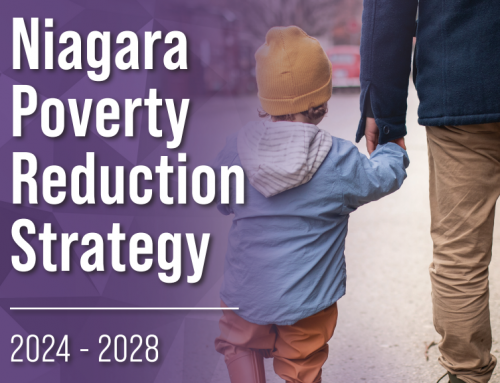Precarious employment is defined as work that is typically part-time, temporary, or contract, and often without longer-term job security and employment-based benefits. It is often called non-standard employment. To better understand employment precarity and its impact in Niagara, PEPiN (Poverty and Employment Precarity in Niagara), recently completed a research study and report, “Uncertain Jobs, Certain Impacts: Employment Precarity in Niagara”. PEPiN is an initiative lead by United Way Niagara and Brock University, made possible with funding from the Ontario Trillium Foundation.
In an effort to replicate similar studies conducted in other Ontario cities by the Poverty and Employment Precarity in Southern Ontario (PEPSO) research group, the PEPiN study analyzed survey results from a random sampling of 713 employed Niagara residents in the summer of 2017. PEPiN contracted Leger, the same survey research group which conducted the other PEPSO studies, to survey participants on their experience with precarious work, mental health, general health, and overall quality of life.
After evaluating answers to survey questions completed by phone interviews, results indicated that precarious employment has a significant impact on the individuals, families and communities it touches, and that these impacts are indeed widespread and pervasive in Niagara. In fact, statistics gathered to inform the PEPiN study show that:
- Only forty-eight percent of all workers in the 12 local-area municipalities of Niagara region have stable, secure full-time jobs resulting from what is called a standard employment relation (SER). All other employees are working in situations with some measure of precariousness. This includes jobs without benefits and jobs with uncertain futures.
- In Niagara, precarity has been most prevalent among young adults (25-34 years of age), older adults, and foreign-born individuals who have been in Canada 20 or fewer years. However, precarity is found among all demographic groups.
- In Niagara, being precariously employed is has the most significant effects when you’re earning a low income — and it’s found across all income levels, hurting everyone who experiences it.
- Precarious employment has a harmful effect on individuals, children and families. It can damage the social fabric that ties together our communities because it makes it more difficult for people to form relationships and plan spending time with family and friends.
- Employer-provided health benefits are a regular feature of secure work but are very rare among precarious workers.
Study results also revealed critical information about the relationship between precarious employment and health, and indicated important demographic trends with regards to precarious work. Finally, the report concludes with a list of recommendations, aimed at government and employers, to reduce the incidence of precarious employment and to mitigate its impacts.
This research project is an important first step and I encourage you to consider how your own organization can use this information in an evidence-informed decision-making process to encourage meaningful action.
Lori Kleinsmith
Health Promoter, Bridges Community Health Centre
lori.kleinsmith@bridgeschc.ca
Additional Resources
BLOG | Getting Hard Data in Niagara on the Hard Truth of Employment Uncertainty
REPORT | Uncertain Jobs, Certain Impacts: Employment Precarity in Niagara
ADDITIONAL REPORTS FROM PEPSO | Reports on precarious employment research from other communities








